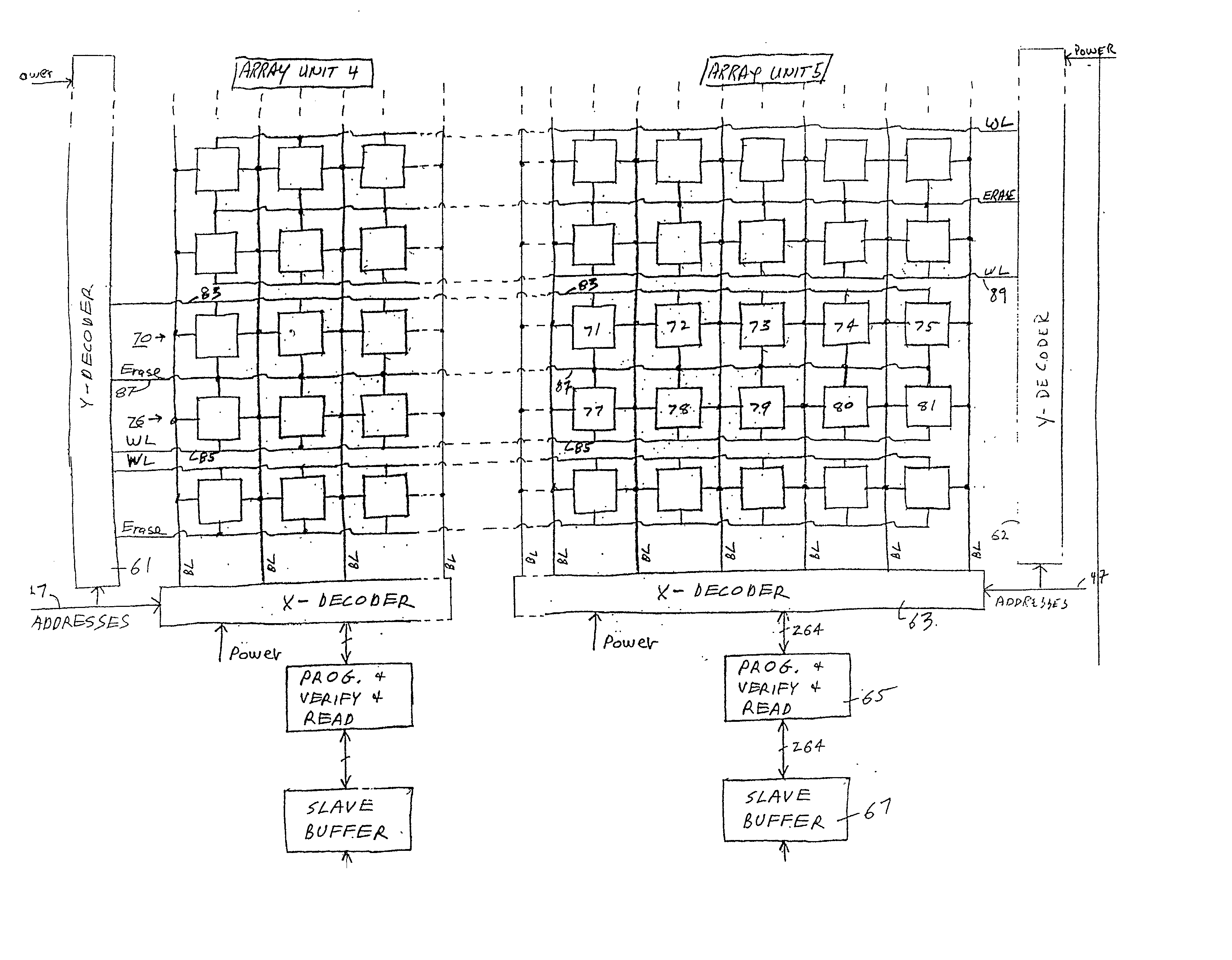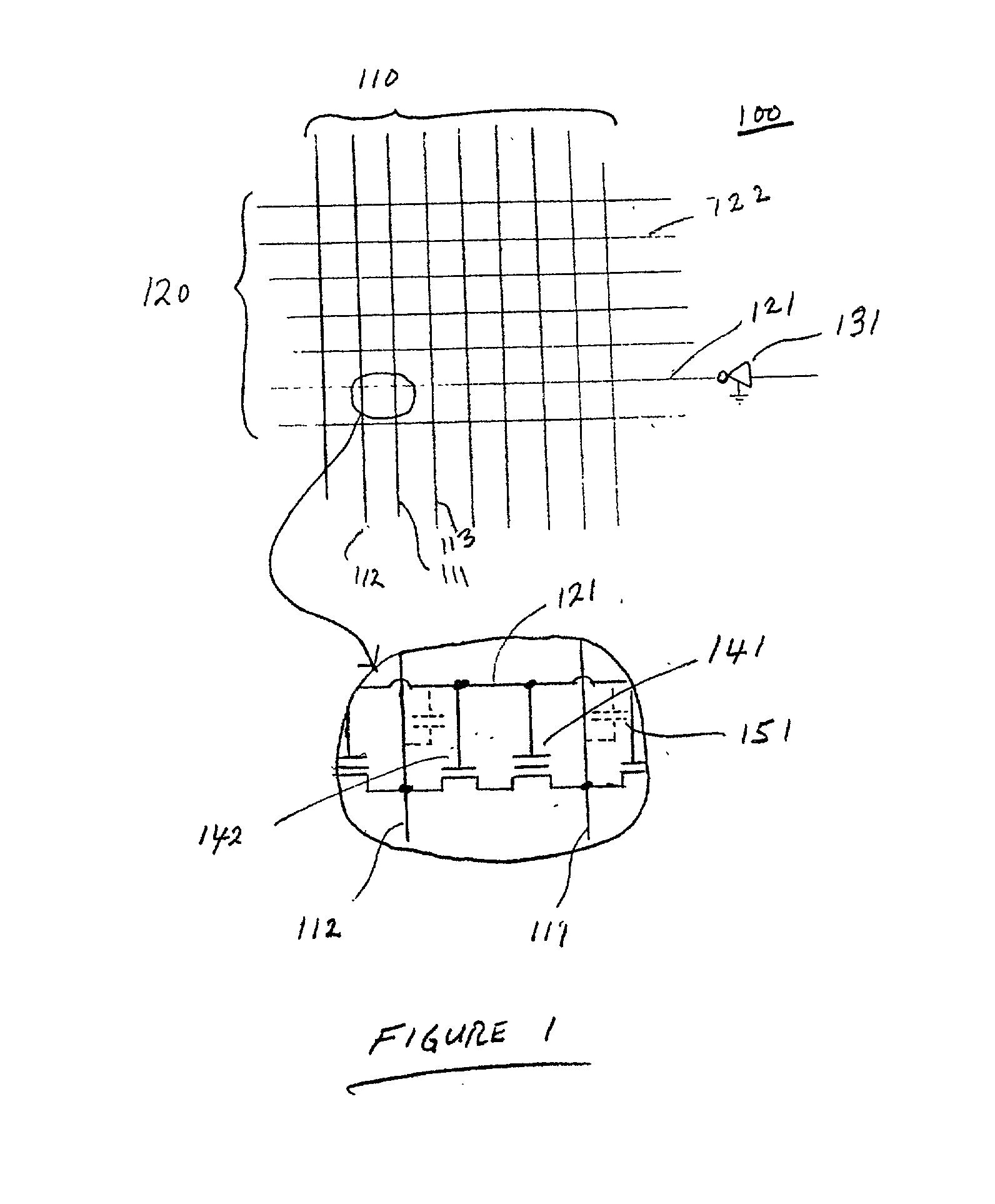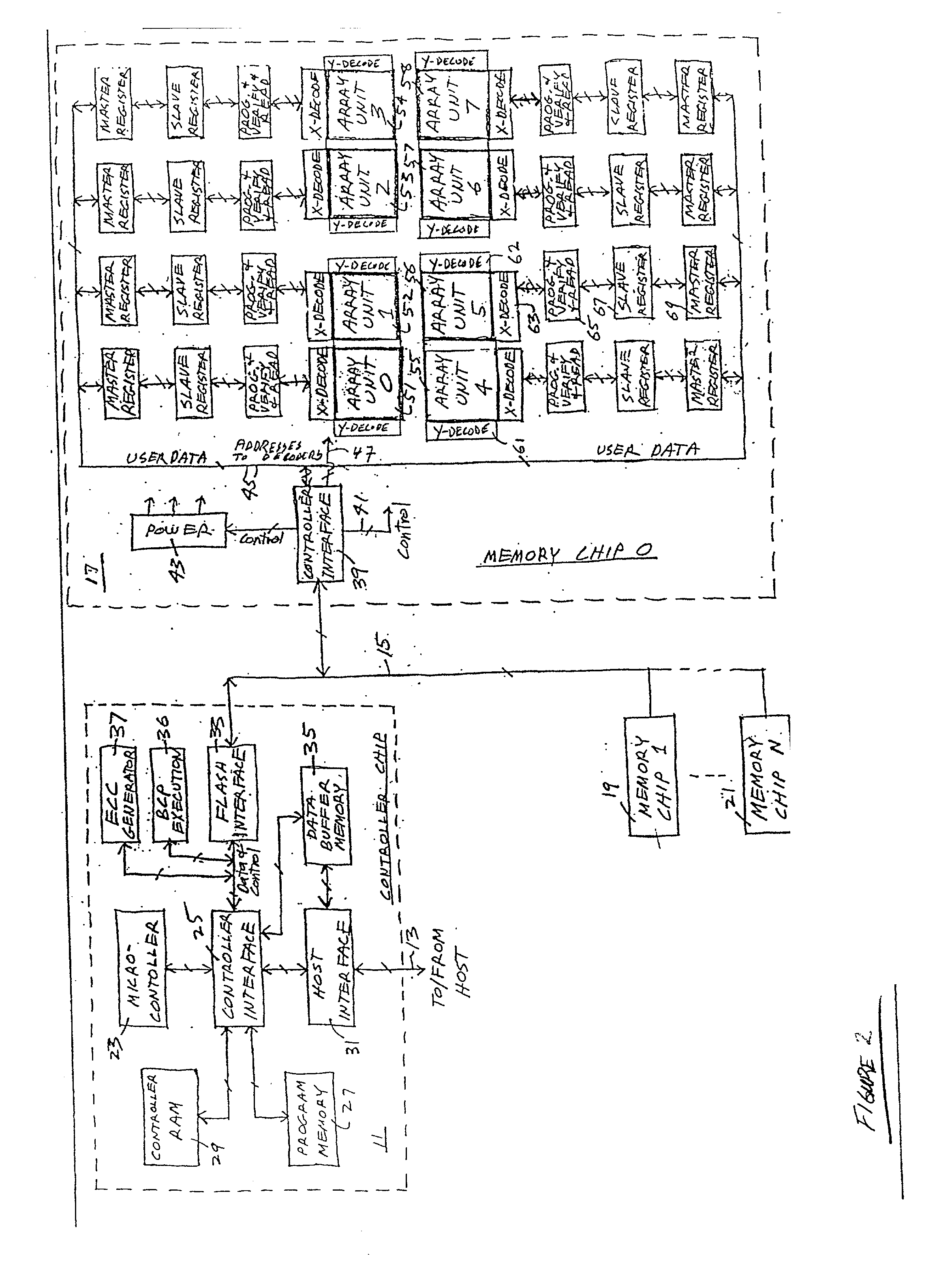Method of reducing disturbs in non-volatile memory
- Summary
- Abstract
- Description
- Claims
- Application Information
AI Technical Summary
Problems solved by technology
Method used
Image
Examples
Embodiment Construction
[0024] It has been discovered that disturbs are introduced into a memory array due to displacement currents in non-selected word lines resulting from the rate of change in the voltage levels on the bit lines. Returning to the simplified situation of FIG. 1, consider the case where the cell connected between bit lines 111 and 112, with its control gate connected to word line 122, is to be programmed. The bit line 111 will be raised to a voltage Vbl of, say, 5 volts relative to bit line 112. The voltage change on bit line 111 will occur over a finite rise time and is characterized by the rate dVbl / dt. Other cells along the selected word line 122 which are being programmed will similarly have their bit lines raised. The word line 122 is then pulsed with a programming voltage, a verification usually being performed between programming pulses. For the non-selected word lines, such as 121, where the cells are not being programmed, a word line driver such as 131 sets these word lines to gr...
PUM
 Login to View More
Login to View More Abstract
Description
Claims
Application Information
 Login to View More
Login to View More - R&D
- Intellectual Property
- Life Sciences
- Materials
- Tech Scout
- Unparalleled Data Quality
- Higher Quality Content
- 60% Fewer Hallucinations
Browse by: Latest US Patents, China's latest patents, Technical Efficacy Thesaurus, Application Domain, Technology Topic, Popular Technical Reports.
© 2025 PatSnap. All rights reserved.Legal|Privacy policy|Modern Slavery Act Transparency Statement|Sitemap|About US| Contact US: help@patsnap.com



